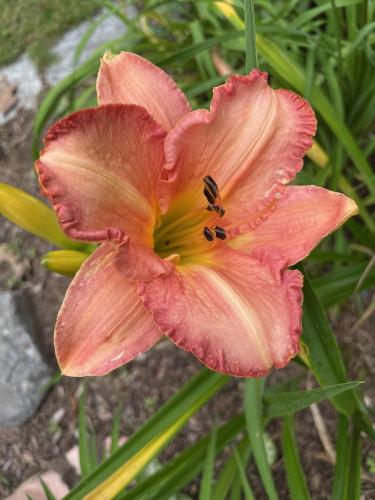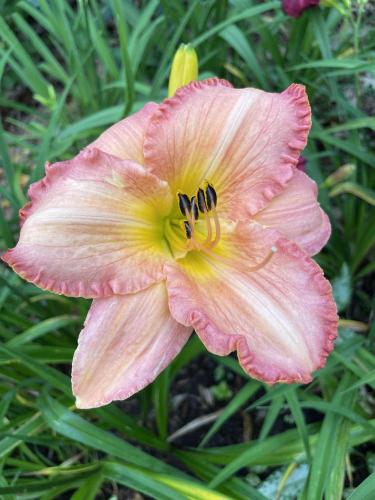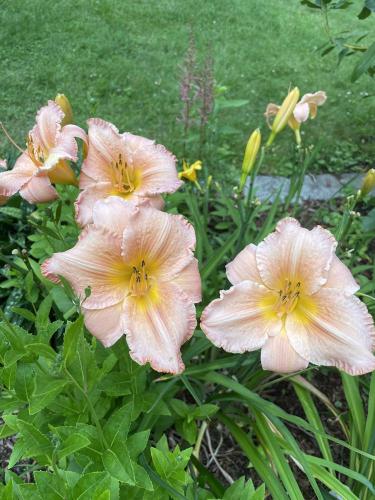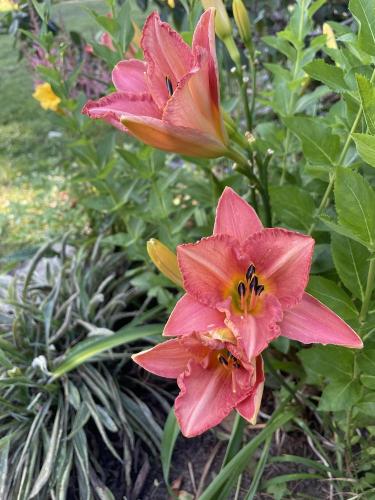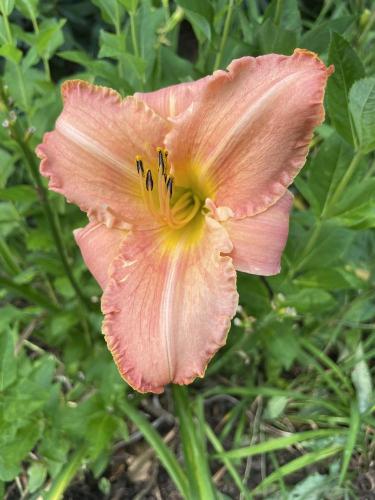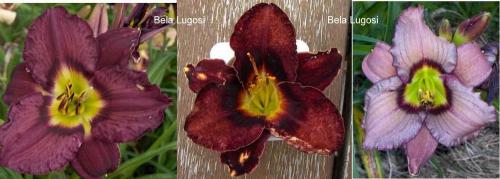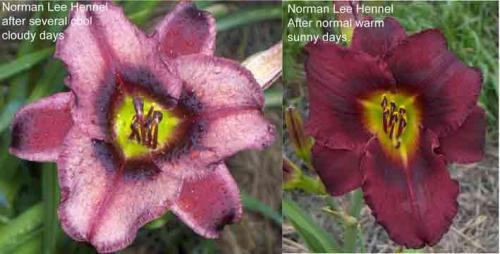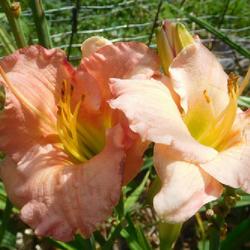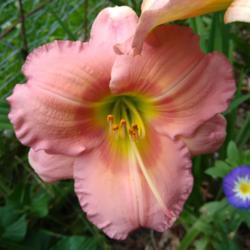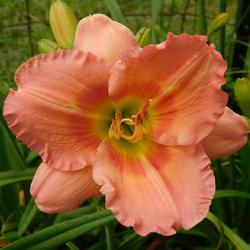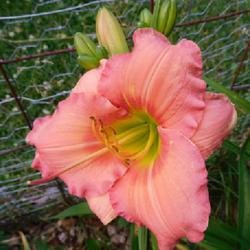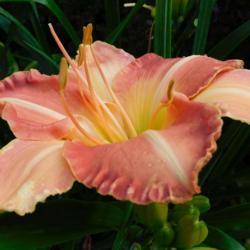I agree with Maurice re: pH only directly affecting colour among hydrangeas, not other plants (in my 30+ years of gardening). But one note I do not see (above) is that, while many daylilies present consistently in a specific garden but differently from other gardens (ie, hybridizer's photo vs home garden) ... Others are seldom to never the same in the same garden, same conditions, same year... or even same plant, same scape, same day! Chorus Line is notorious for presenting consistently inconsistent colours!
I posted a pic from my own Chorus Line (a couple of years ago) showing two unmatched blooms side by side on the same scape...
The difference in tone from pastel to deep was not caused by the lighting, the blooms were in fact completely different shades. I have even had them bloom in different colours (pink vs coral) on the same scape at the same time. The colours range from pink to coral to almost sherbert orange, at least in my gardens.
While I do think Chorus Line has more of a reputation for its range of colours and changing blooms, I am more surprised... considering the range of zones and temps and assorted growing conditions (east to west, north to south) ... that some daylilies are so incredibily consistent throughout many gardens.
Just as, in the north, chevron patterns tend to be more intense and fade out as temps warm to the south... I think some colours also are less intense in the heat.
One of my very favourite daylilies, Guava Jelly, is spectacular here in zone 3... photos do not do it justice...
In the south, it barely passes pastel tones...
I would say, as many here have remarked, that before buying a daylily based on its gorgeous colour... check as many online gardens as possible and as many pictures here in the database, to see what it 'really' looks like in many gardens.
That's not to say that hybridizers are faking photos - far from it! It's just that those precise growing conditions may be what is needed for that particular look, and unless you see that it is stable in other gardens and other growing conditions, you may be destined for disappointment.
